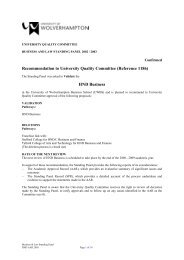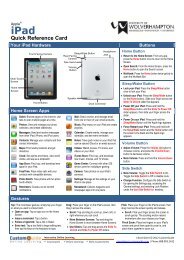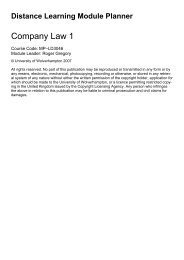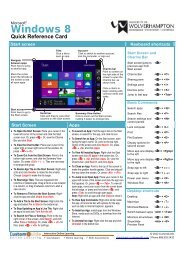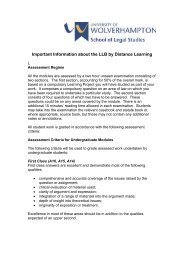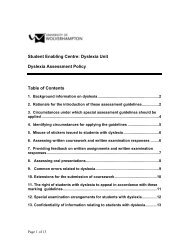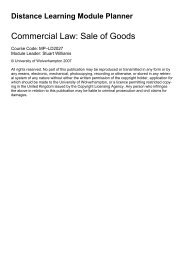This activity can be found in Pretty et al, (1995) - University of ...
This activity can be found in Pretty et al, (1995) - University of ...
This activity can be found in Pretty et al, (1995) - University of ...
- No tags were found...
You also want an ePaper? Increase the reach of your titles
YUMPU automatically turns print PDFs into web optimized ePapers that Google loves.
07 FS1What is ‘active listen<strong>in</strong>g’?ObjectiveParticipants will <strong>be</strong> able to identify characteristics <strong>of</strong> an ‘active listener’.Time30 m<strong>in</strong>utesMateri<strong>al</strong>sMt 07 FS1.1 - cartoon; Mt 07 FS1.2 - scenariosTask & OrganisationInput for task: Cartoon; scenarios; own perceptions1.1 (5 m<strong>in</strong>utes – plenary) Expla<strong>in</strong> that the next s<strong>et</strong> <strong>of</strong> sessions will focus on thefollow<strong>in</strong>g skills:♦ Active Listen<strong>in</strong>g♦♦Question<strong>in</strong>gManag<strong>in</strong>g <strong>in</strong>formationThese are skills which are necessary for SBRTs to effectively carry out theactivities that they will <strong>in</strong>itiate <strong>in</strong> their schools.1.2 (5 m<strong>in</strong>utes – plenary) Give participants the cartoon (Mt 07 FS1.1) Ask: What doesthis cartoon tell us about the way we listen? Explore the concept <strong>of</strong> selectivelisten<strong>in</strong>g, i.e. we pick out the parts that we are <strong>in</strong>terested <strong>in</strong> or that mean som<strong>et</strong>h<strong>in</strong>gto us; we rarely listen to every word.1.3 (5 m<strong>in</strong>utes – pairs) Ask participants to f<strong>in</strong>d a partner and sit opposite them. Giveone person from each pair card A and the other card B (Mt 07 FS1.2) – a differentscenario for each pair. Ask them, without show<strong>in</strong>g their cards to each other, t<strong>of</strong>ollow the <strong>in</strong>structions.Output(From feedback) List <strong>of</strong> characteristics <strong>of</strong> an ‘active listener’.Feedback(15 m<strong>in</strong>utes – plenary) Discuss the follow<strong>in</strong>g questions (<strong>in</strong> relation to the speaker):♦ How did you know when your partner was listen<strong>in</strong>g to you? How did you feel?♦ How did you know if your partner was not listen<strong>in</strong>g to you? How did you feel?♦ How did your partner’s ‘not listen<strong>in</strong>g’ affect your ability to t<strong>al</strong>k?♦ What effect does ‘hav<strong>in</strong>g a good listener’ have on the speaker?♦ What are the characteristics <strong>of</strong> an ‘active listener’? (List their responses and display)Discuss gener<strong>al</strong>ly the importance for facilitators <strong>of</strong> active listen<strong>in</strong>g skills.76 Jamaica All Age Schools Project: Facilitator Tra<strong>in</strong><strong>in</strong>g for School Based Resource Teachers



